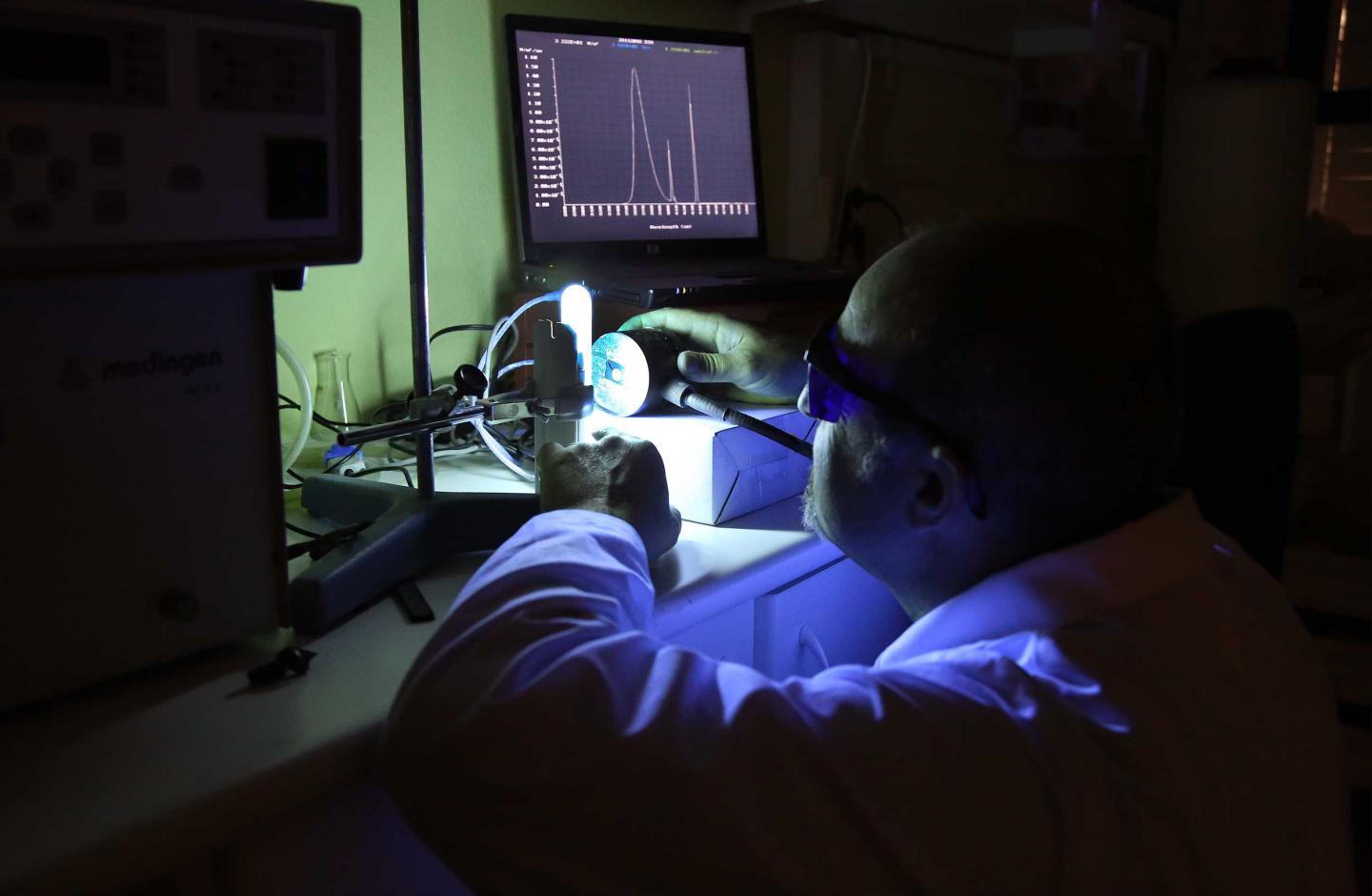Researchers from the University of Malaga (UMA) evidence that levels of this vitamin in the body decrease in those months when sun impact is higher

Credit: Researchers from the University of Malaga in the Laboratory of Dermatological Photobiology
For the first time, researchers from the University of Malaga have evidenced this relationship, confirming that ultraviolet radiation affects directly in proportion to folate in blood.
Thus, this team of scientists have determined a seasonal risk threshold among patients with folate deficiency, since, according to this study, folate levels decrease significantly in those months when solar radiation is higher.
A work performed in the Laboratory of Dermatological Photobiology of UMA, located in the Center for Medical and Health Research (CIMES), in which more than 100,000 patients from hospital units of Malaga were examined for five years.
“We have revealed that cycles repeat annually. The percentage of low values increases in summer by almost 3.5 percent in comparison to winter”, explains researcher José Aguilera, who further says that folate levels are lower in men as compared to women, regardless of seasonality.
In view of these results, experts recommend that patients with folate values below 4 ng/mL include folate-rich food, such as legumes or green vegetables, in their diet in summertime, and even take dietary supplements in case of low deficiency.
Folate is essential for cell division and growth. Low levels of folate are related to various conditions, such as megaloblastic anemia, neural tube defects and cardiovascular diseases. It is, therefore, a vitamin (vitamin B9) of vital importance for human beings, because, for example, it helps add iron to anemia or, in the case of newborns, prevent congenital disorders at birth, hence its importance during pregnancy.
Laboratory of Dermatological Photobiology
Since 2006, researchers from the University of Malaga have been working to find new trends in photoprotection, towards unprecedented lines that deepen in the sunlight-skin relationship, through the Laboratory of Dermatological Photobiology, which is unique in Spain.
Other R&D&I lines include the study on positive effects of vitamin D to prevent certain diseases, such as digestive and cardiovascular diseases, or the development of more efficient and long-lasting sunscreens, which are based on synthetic compounds but inspired by marine algae.
UV-DERMA, an app to know how long it takes the skin to burn
The researchers María Victoria de Gálvez and José Aguilera, members of this UMA laboratory, in collaboration with Fundación Piel Sana of the Spanish Academy of Dermatology, have also developed UV-DERMA, a mobile app that estimates the time our skin takes to burn when exposed to the sun.
Given its success, with more than 40,000 downloads, they are currently developing a new version translated into all languages so that it can be used around the globe.
###
REFERENCE
Valencia-Vera E, Aguilera J, Cobos A, Bernabó JL, Pérez-Valero V, Herrera-Ceballos E.. ‘Association between seasonal serum folate levels and ultraviolet radiation’. ‘J Photochem Photobiol B’. 2019 Jan;190:66-71
DOI: 10.1016/j.jphotobiol.2018.10.012
Media Contact
María Aguilar
[email protected]
34-952-131-129
Original Source
https:/
Related Journal Article
http://dx.




